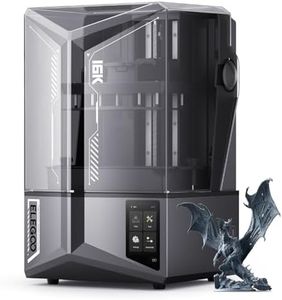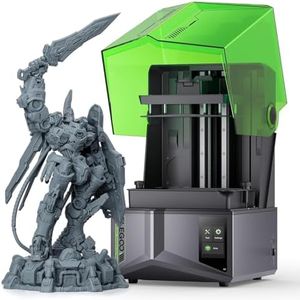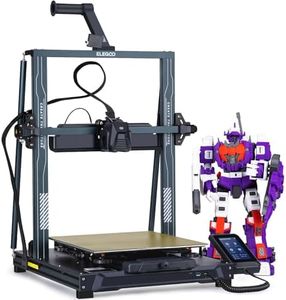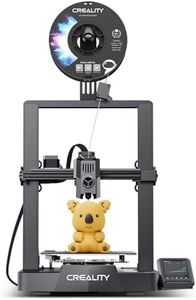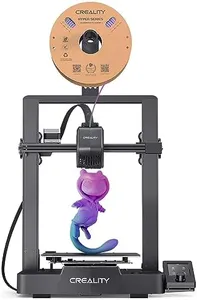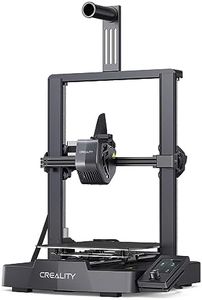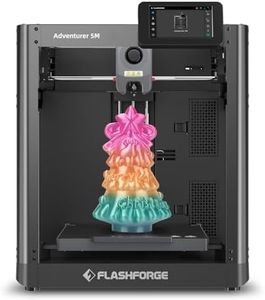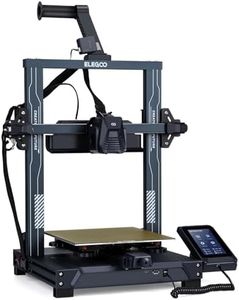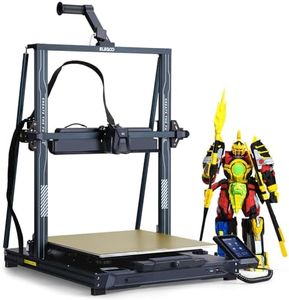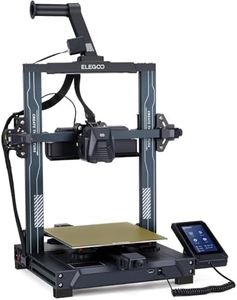We Use CookiesWe use cookies to enhance the security, performance,
functionality and for analytical and promotional activities. By continuing to browse this site you
are agreeing to our privacy policy
10 Best Affordable 3 D Printers
From leading brands and best sellers available on the web.Buying Guide for the Best Affordable 3 D Printers
Choosing the right 3D printer can feel overwhelming, but once you understand the main specifications, it becomes much easier to find a model that matches your needs. Start by thinking about what you want to print, how much space you have available, and how involved you want to be in the printing process. Each 3D printer has strengths and limitations, so the goal is to find one that fits your typical projects and comfort level. When comparing options, keep an eye on the following key specs to ensure you make a choice that you will enjoy using and that will serve your purpose well.Print VolumePrint volume refers to the maximum size of the object the printer can create in one job. It's measured in cubic dimensions, such as 220 x 220 x 250 mm. This is important because it limits the size of any single piece you can print. Small print volumes (under 150 mm in any dimension) are suitable for small toys or objects, medium sizes (about 150-250 mm) work for models, gadgets, and parts, while larger volumes (over 250 mm) allow you to make bigger or more complex items. If you’re unsure what you’ll print, medium print volume is usually a safe starting point. If you plan to make larger objects, prioritize a bigger print volume.
Print Material CompatibilityThis spec tells you which types of filaments the printer accepts, such as PLA, ABS, PETG, or flexible materials. Each material has its own properties in terms of strength, flexibility, and ease of use. Most entry-level printers work best with PLA, which is easy to use and great for beginners. If you want to experiment with tougher or more flexible materials, look for a printer that can handle higher temperatures and a wider variety of filaments. Think about what you’d like to make: if you need stronger, more heat-resistant objects, material compatibility becomes more important.
Layer ResolutionLayer resolution, often given in microns (µm), describes how smooth and detailed your prints can be. Lower numbers mean thinner layers and finer detail, but also longer print times, while higher numbers are quicker but less precise. Typical affordable 3D printers offer layer resolutions around 100-300 microns. If sharp detail is key for your projects, seek out a printer with a lower minimum layer height. For function-over-form jobs or fast prototyping, higher layer resolutions are acceptable.
Print SpeedPrint speed tells you how fast the printer can build an object, usually measured in millimeters per second (mm/s). Higher print speeds mean quicker results, but can sometimes reduce print quality or cause failures if the printer isn’t stable. Lower speeds are great for precise or delicate prints, while higher speeds suit larger, less detailed parts or rapid prototyping. If patience isn’t your strong suit or you’ll print a lot, look for moderate print speeds, but don’t sacrifice print quality for speed unless your projects demand it.
Bed Leveling SystemThe bed leveling system ensures the print surface stays even relative to the print head, which is essential for successful prints. Manual leveling requires adjustment by the user and can take time, while automatic or assisted leveling makes the process easier and more reliable. If you’re new to 3D printing or want to avoid frustration, go for a printer with assisted or fully automatic bed leveling. More hands-on users or tinkerers might be comfortable with manual leveling if they enjoy the setup process.
Ease of AssemblySome 3D printers come fully assembled, while others are kits that require varying degrees of build time and know-how. Fully assembled printers are great if you want to start printing right away and minimize hassle. Kits give you more insight into how the printer works, which may help if you like troubleshooting or customizing. Consider your comfort with technical tasks and how much setup effort you’re willing to put in before you can start creating.
Support and CommunitySupport and community resources refer to the availability of guides, tutorials, forums, and troubleshooting help from both the manufacturer and the wider user base. Good support can make the learning curve much smoother and help you solve issues more quickly. If you’re new to 3D printing, pick a printer known for an active community and solid after-sales help so you always have someone to turn to for advice or solutions.
